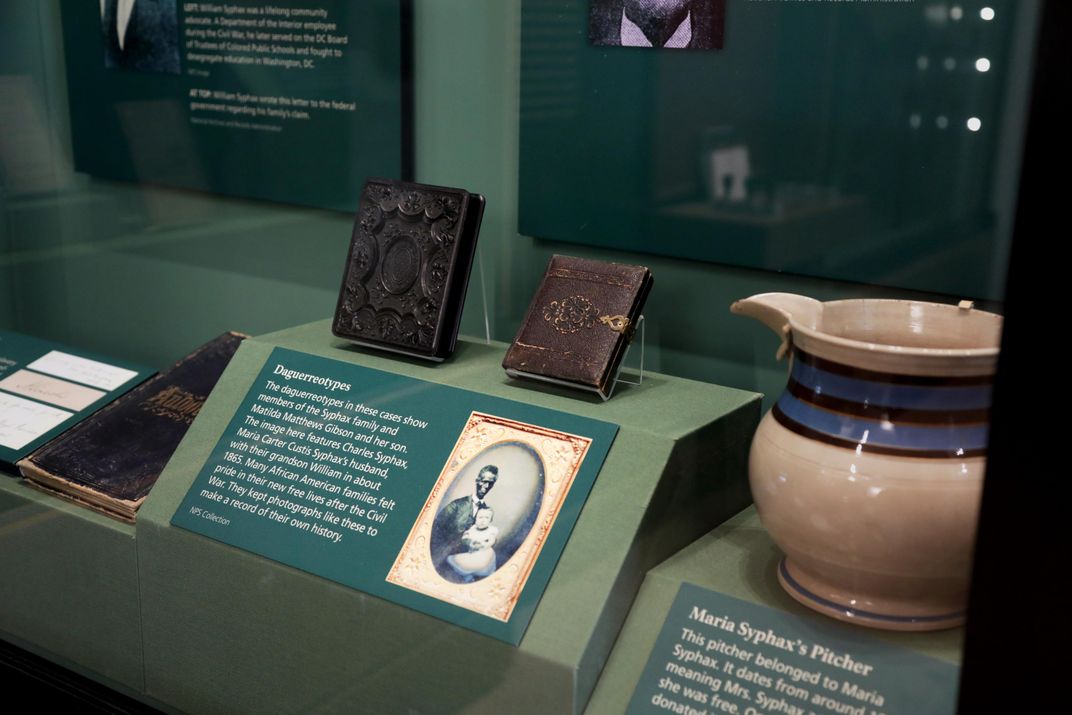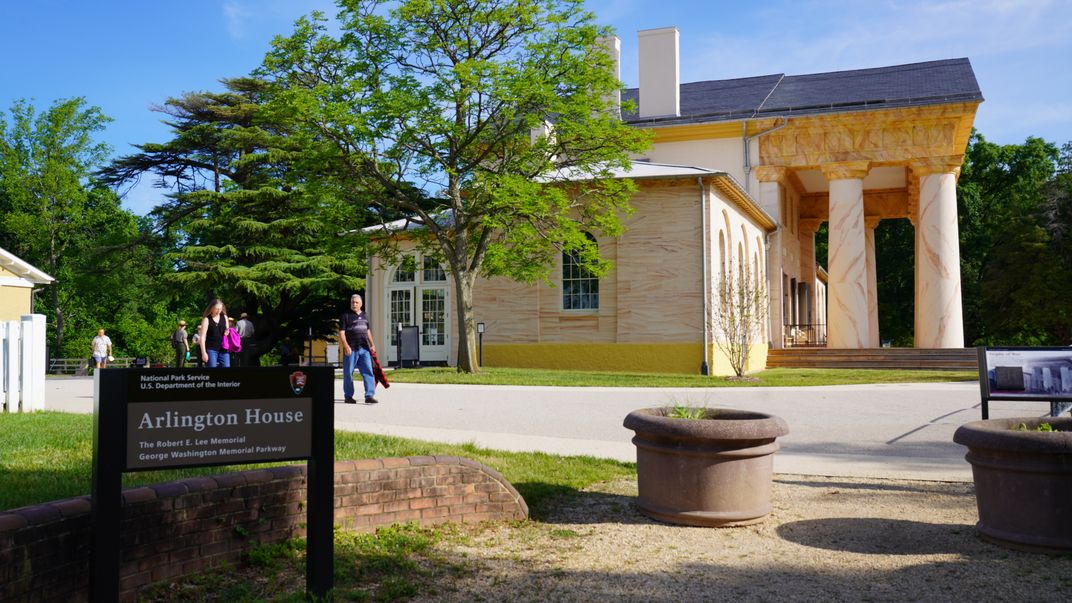Robert E. Lee’s Former Home Reopens With Renewed Focus on the Enslaved
Built by George Washington’s adopted son, Arlington House recently underwent a three-year “rehabilitation” project
:focal(1282x909:1283x910)/https://tf-cmsv2-smithsonianmag-media.s3.amazonaws.com/filer/a3/6b/a36b3bca-f00f-4a7c-bf47-630dabbe0327/gwmo_arho_museumupdate_08252020_lm_11-1_1.jpeg)
The National Park Service (NPS) has reopened the onetime home of Confederate General Robert E. Lee after a major renovation and the addition of new exhibits on the lives of people enslaved there.
As Melissa Howell reports for WTOP News, the $12 million restoration of Arlington House, located at Arlington National Cemetery in northern Virginia, began in 2018.
“This is the largest curatorial, or museum project in the history of the parks service,” Aaron Larocca, a park ranger and NPS spokesperson, tells WTOP.
Enslaved laborers and hired craftsmen built the mansion well before Lee’s time. According to Matthew Barakat of the Associated Press (AP), George Washington Parke Custis, the adopted son of George Washington and grandson of Martha Washington, ordered its construction to honor the first president. Work began in 1802 and concluded in 1818.
Lee, for his part, moved to Arlington House after marrying Custis’ daughter, Mary Anna Randolph Custis, in 1831. He departed the property when the Civil War broke out in April 1861 and never returned.
Along with materials telling the stories of the estate’s owners, the refurbished building now includes exhibits and materials on those enslaved there, including the Norris and Syphax families. Per the NPS website, Wesley and Mary Norris were among three enslaved people who fled from Arlington House in 1859, believing that they had been freed by Custis’ will. An account Wesley later provided to an anti-slavery newspaper stated that upon his recapture, Lee ordered him whipped 50 times and had his wounds washed with brine.
Charles Syphax, meanwhile, was enslaved at George Washington’s Mount Vernon home before being transferred to Arlington House, as Allison Keyes wrote for Smithsonian magazine in 2018. He eventually married Maria Carter Custis, the illegitimate daughter of George Washington Parke Custis and an enslaved maid. Members of the Syphax family have gone on to become politicians, high-profile professionals, and advocates and supporters of education for Black Americans.
Steve Hammond, a Syphax family descendant who is now a trustee of the Arlington House Foundation, tells the AP that the new educational displays have improved the site by telling its history in a more complete manner.
“It’s going to be much more focused on everyone who has lived on that historic piece of property,” he says.
Hammond has called for Lee’s name to be removed from the mansion’s official moniker, which is “Arlington House, The Robert E. Lee Memorial.” According to the Park Service, the memorial honors Lee for “his role in promoting peace and reunion after the Civil War” and encourages the study of “some of the most difficult aspects of American [h]istory.” During the Civil War, the United States government seized the home for nonpayment of taxes; the U.S. Army then used the property to establish the military burial ground that became Arlington National Cemetery. Congress passed legislation that sought to restore the home in Lee’s honor in 1925, during the Jim Crow era.
Funding for the new renovation project came from Carlyle Group co-founder David Rubenstein, a philanthropist who has also donated money to projects at the Washington Monument, Lincoln Memorial and other D.C.-area historical sites.
“The National Park Service has done a spectacular job refurbishing Arlington House and telling the stories of the enslaved people who built the plantation house and worked there,” says Rubenstein in a statement. “I hope many people get to visit and believe that Arlington House’s rich and complicated history will add to the necessary and important discussion in our country about racial justice.”
During the recent restoration, researchers discovered four bottles buried in a pit near the fireplace in an enslaved servant’s quarters, reports Michael E. Ruane for the Washington Post. Each held a bone fragment from a goat or sheep and was pointed north, in the direction of freedom.
“[This find] gives a voice to those who have been almost invisible in history and helps to demonstrate their humanity, their links to their past … and their hopes for the future,” NPS archaeologist and cultural resources manager Matthew R. Virta tells the Post.
Virta says the vessels were probably placed there during the 1850s. Sometimes known as “conjure bottles” or “witching bottles,” the objects may have ties to African traditions of burying sacred objects.
NPR’s Catherine Whelan reports that Arlington House has served as the official symbol of Arlington since 1983, appearing on the county’s seal, flag, police cars and stationery. In light of last year’s protests over racial inequality and police brutality, the Virginia county is working to create a new logo that omits the mansion.
/https://tf-cmsv2-smithsonianmag-media.s3.amazonaws.com/accounts/headshot/Livia_lg_thumbnail.png)


/https://tf-cmsv2-smithsonianmag-media.s3.amazonaws.com/accounts/headshot/Livia_lg_thumbnail.png)